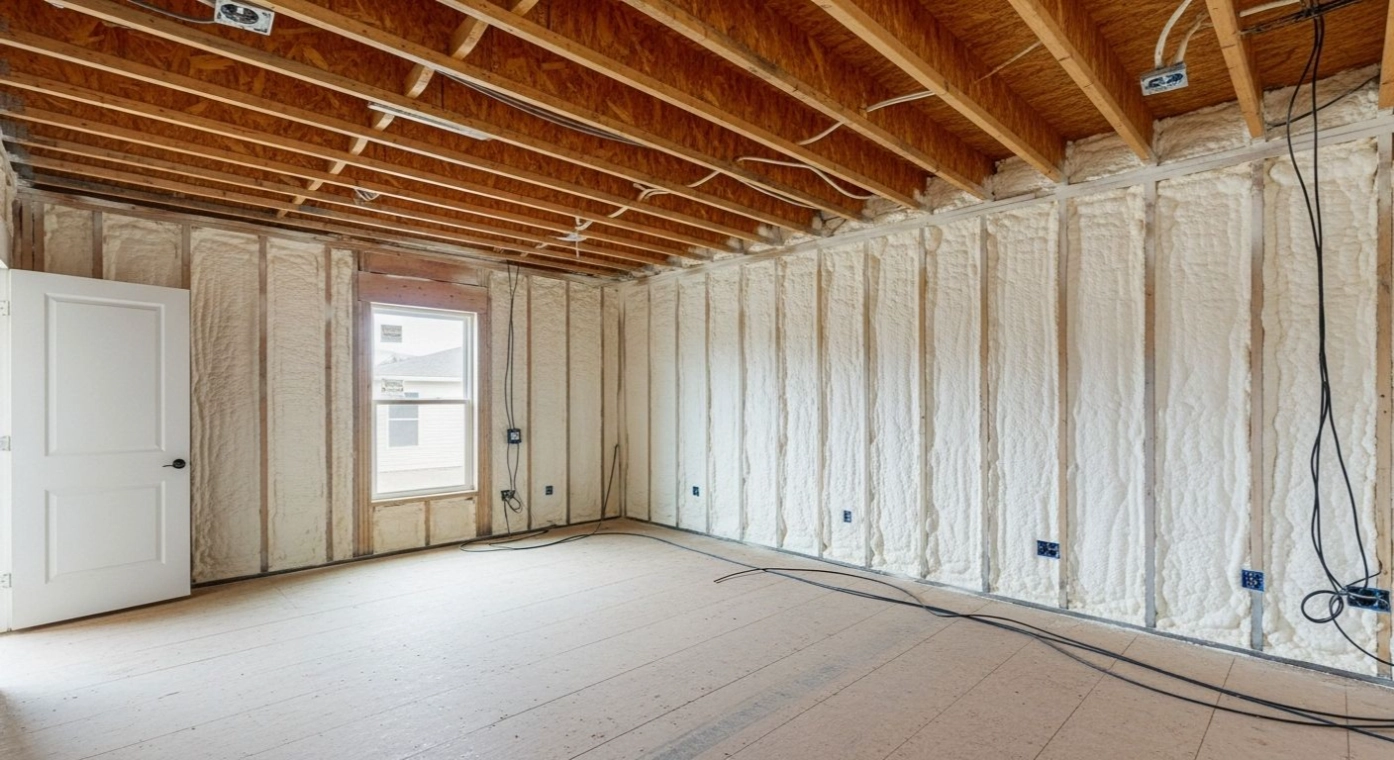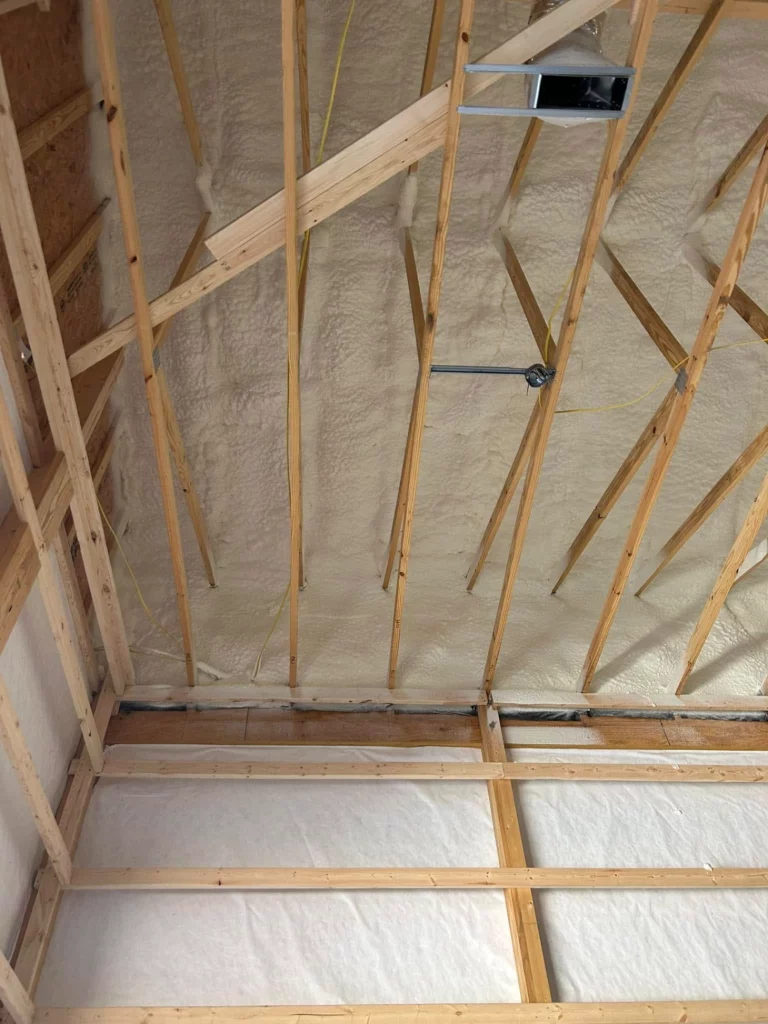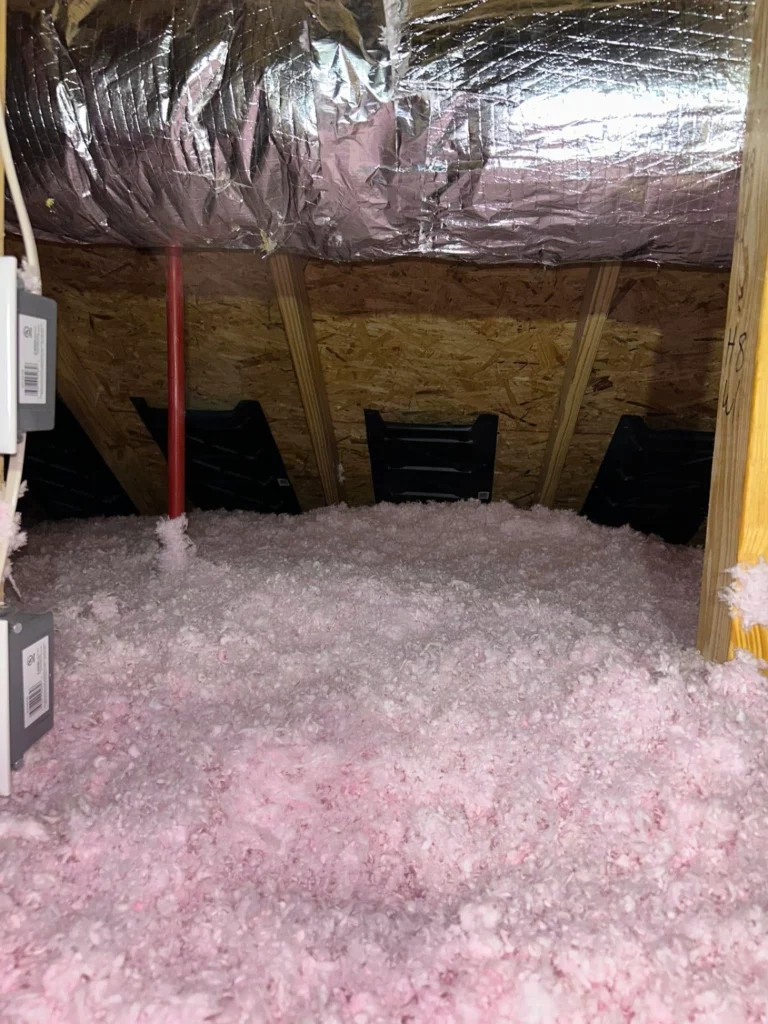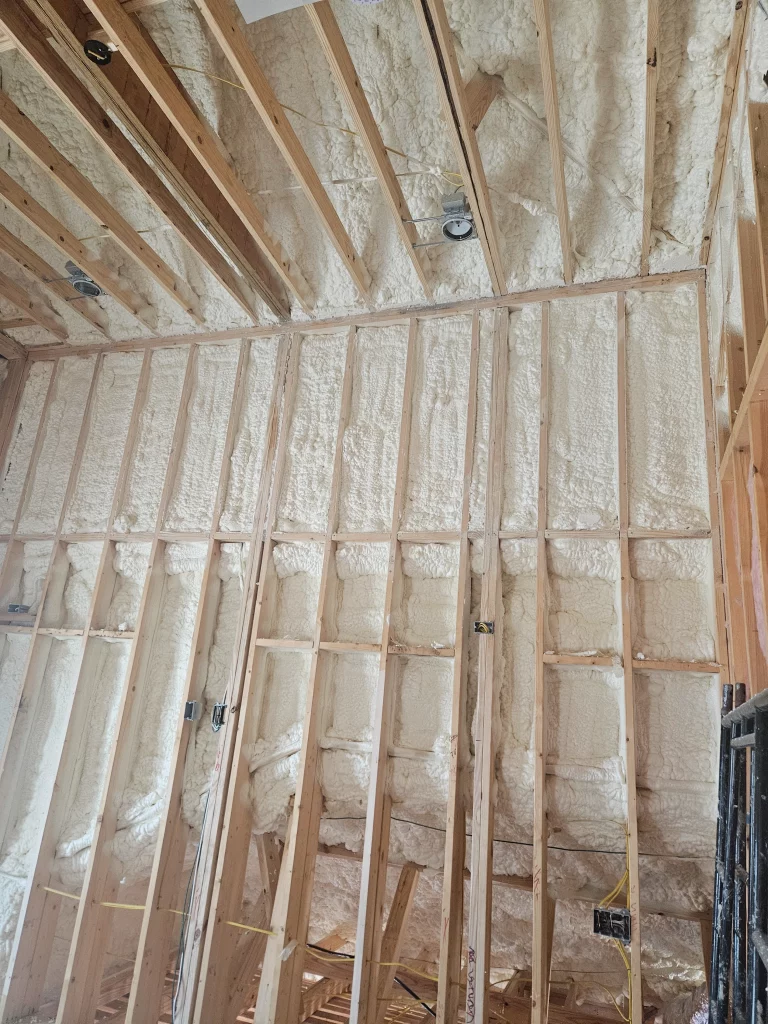Spray foam insulation can help prevent mold and moisture by creating an airtight barrier that restricts the movement of humid air and condensation inside buildings. By minimizing the interaction between warm and cool surfaces, spray foam reduces the conditions mold needs to develop. The insulation itself does not absorb water, which limits opportunities for mold growth.
In practice, spray foam is effective in controlling moisture when installed correctly in walls, basements, attics, and roofs. Improper application or leaving gaps may reduce its performance. This article explains how spray foam contributes to moisture and mold prevention, explores technical considerations, and outlines factors property owners should evaluate before making a decision.
How Spray Foam Controls Mold and Moisture
Spray foam provides both thermal insulation and an air seal, preventing humid air from infiltrating building cavities. By stabilizing indoor humidity, it reduces the likelihood of condensation forming on cool surfaces. This creates an environment less favorable for mold colonies to develop.
Key Mechanisms
- Creates a continuous air barrier
- Limits condensation on interior surfaces
- Resists water absorption
- Maintains stable indoor humidity levels
Differences Between Spray Foam and Traditional Insulation
| Property Feature | Spray Foam Insulation | Fiberglass/Cellulose Insulation |
|---|---|---|
| Air Sealing | Strong air barrier | Minimal air sealing |
| Water Resistance | Closed-cell repels water; open-cell slows absorption | Absorbs and retains moisture |
| Mold Susceptibility | Resistant when installed correctly | High susceptibility if damp |
| Longevity | 20+ years with minimal degradation | Shorter lifespan, prone to settling |
Technical Performance Data
| Technical Factor | Closed-Cell Spray Foam | Open-Cell Spray Foam |
|---|---|---|
| R-Value per Inch | 6.0–7.0 | 3.5–4.0 |
| Water Absorption | Low (repels liquid water) | Moderate (permeable to vapor) |
| Air Barrier | Excellent | Good |
| Mold Resistance | High | Moderate |
Bonus Tip: In humid climates like North Carolina, closed-cell spray foam is often preferred in basements and crawl spaces due to its lower permeability and superior resistance to water intrusion.
Regional Considerations for Moisture Control
In regions with hot, humid summers such as Raleigh, moisture control is a critical factor in building durability. Outdoor humidity frequently exceeds 70%, and condensation risks increase in poorly insulated walls and attics. Using spray foam prevents humid air infiltration and limits condensation on framing surfaces.
Bonus Tip: Pay attention to attic ventilation. Spray foam applied to roof decks often eliminates the need for traditional attic vents, creating a controlled environment that helps maintain low moisture levels.
Things to Review Before Choosing Spray Foam
- Building Structure: Assess if the space has existing water intrusion issues. Spray foam cannot fix leaks; it only controls air and vapor.
- Climate Zone: In humid southern states, closed-cell foam may offer superior performance compared to open-cell.
- Application Method: Proper thickness and full cavity coverage are essential for mold prevention.
- Building Codes: Local codes may dictate vapor barrier requirements depending on foam type.
- Future Access Needs: Once applied, spray foam makes it harder to access wiring and plumbing inside walls.

Services Available for Moisture and Mold Prevention
- Closed-Cell Spray Foam Insulation: Dense application that resists water, ideal for basements, crawl spaces, and roofs.
- Open-Cell Spray Foam Insulation: Lightweight option suitable for interior walls and ceilings where sound absorption is desired.
- Roof Insulation: Applied to roof decks to create conditioned attics and reduce condensation risks.
- Basement Insulation: Protects foundation walls from humid air infiltration and stabilizes temperature.
Common Questions Before Installation
Will spray foam stop existing mold?
No. Existing mold must be remediated before installation.
Does spray foam replace the need for vapor barriers?
In many cases, closed-cell foam serves as a vapor barrier, but building codes should be reviewed.
Can spray foam be applied in damp areas?
Application requires dry surfaces. Moisture must be resolved prior to installation.
How long does spray foam last?
Properly installed spray foam can last 20 years or more without losing performance.
Summary of Key Points
Spray foam insulation helps prevent mold and moisture by creating an air- and vapor-resistant barrier that reduces condensation. Closed-cell spray foam offers the strongest protection in humid climates, while open-cell options provide flexibility for interior use. Correct installation is the deciding factor in long-term performance.
Contact Information
For questions about mold and moisture prevention with spray foam insulation, contact Raleigh Excel Spray Foam Insulation at i[email protected] or call (919) 301-9435. Raleigh Excel Spray Foam Insulation provides expert guidance on insulation strategies suited to North Carolina’s humid climate.
FAQS
How do you maintain spray foam over time
Spray foam requires minimal maintenance. Periodic inspections for leaks or physical damage are sufficient.
What happens if plumbing leaks behind spray foam
Closed-cell spray foam may conceal small leaks. Annual plumbing inspections reduce this risk.
Can spray foam be repaired if damaged
Yes. Sections can be cut out and reapplied without needing full replacement.
Does spray foam affect indoor air quality
Once cured, spray foam is inert and does not release harmful chemicals. Ventilation during installation ensures safe conditions.
Is spray foam resistant to pests
Spray foam does not provide food for pests, but rodents can tunnel through if gaps are present.







